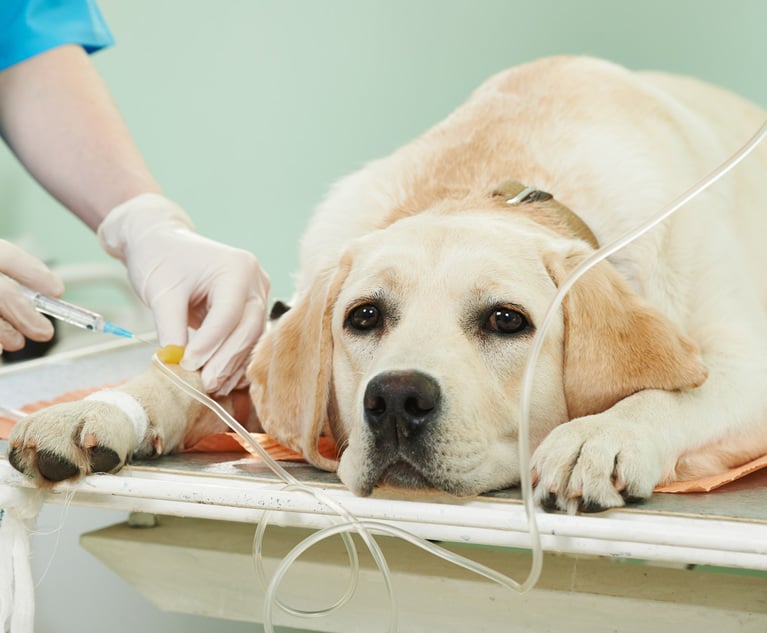Professional liability insurers are becoming increasingly ableto separate the wheat from the chaff in terms of what risks theywill cover, creating a relatively stable environment for much ofthe market.
|Although the consensus is that any overall changes to the marketwill be gradual, there is some variance in opinion as to thedirection those changes will go.
|Jeffrey Klenk, senior vice president at St. Paul Travelers Bondin Hartford, Conn., said the market is relatively stable, adding,“I think it's fair to say, generally at this point, that it's asoftening market.”
|Insurance companies have generally seen good results from theirprofessional liability business and are looking to build on theirsuccesses, said Mr. Klenk, who is also president of theMinneapolis-based Professional Liability Underwriting Society.
|“In general, companies feel pretty good, and the result is thatthey want to grow their businesses,” which is helping to maintainmore competition among carriers.
|Mr. Klenk said the softening trend in the professional liabilitymarket began “early last year,” and with companies continuing tolook to increase their business, he saw little reason to believethings would change drastically in the near future.
|Jeffrey S. Grange, senior vice president for worldwideprofessional liability markets with Chubb Specialty Insurance inWarren, N.J., also saw the year 2005 as one that was “a prettystable environment.” Unlike Mr. Klenk, however, Mr. Grange said themarket isn't softening.
|Instead, the professional liability market, in his view, wasgenerally flat from a pricing standpoint in 2005–”with some modestincreases.” And Mr. Grange said he expects this year to be “verymuch the same.”
|Both Mr. Klenk and Mr. Grange emphasized the general nature ofthe calm in the professional liability market and noted there aresome areas that still present a challenge for insurers and higherrates for insureds.
|Mr. Klenk said there are a few “pockets” where insurers arebetter able to increase rates for companies that have exposureissues. Typically, he said, this would mean companies that have hada bad claims history or increased exposure, or present insurerswith more uncertainty in their future because of a recent merger orchange in the company's direction.
|Mr. Grange noted that many of the most troubled areas within theprofessional liability market are those in the financial servicesindustry, which has seen more than its share of scandals in recentyears.
|“The ditch is pretty full of car wrecks,” he said, referring tothose companies caught in the maelstroms caused by New York StateAttorney General Eliot Spitzer or any other investigation.
|As a result of the turmoil in the financial services realm, Mr.Grange said there is a “fairly scarce supply of available capacity”for large banks and other financial institutions.
|For the more traditional types of professional liability, suchas lawyers and accountants, Mr. Grange said he expected hikes thatare “modest from a rate standpoint, with high single-digitincreases.”
|Elsewhere in the market, risks falling under the umbrella of“miscellaneous” professional liability remain “a fairly goodenvironment,” Mr. Grange added.
|Michael Cavallaro, a director with ARC Excess & Surplus, LLCin Garden City, N.Y., said the troubles in professional liabilityactually extend beyond the financial services realm to any largepublic company, such as those among the Fortune 500.
|In general, there is still “ample competition” in the market, hesaid, but there is also what he called a “dichotomy in the market”in which the overall market is in a positive state in terms ofpricing and competition (from a buyers' perspective), but there arealso “pockets–types of accounts that have more exposure, wherecompetition and the ability to negotiate rates aren't there.”
|Even more troublesome for the companies in those pockets, andthe brokers trying to help them obtain coverage, Mr. Cavallaronoted, is that advances in underwriting have helped more insurancecompanies identify where problems could exist, and which areaswithin the market to avoid.
|“Due to the sophistication in underwriting,” he said, “a lot ofunderwriters have come to the same types of conclusions.”
|Mr. Klenk also noted the increasing sophistication inunderwriting and said much of the emphasis being placed by insurerson improving the accuracy of their risk assessment in underwritingcan be traced to the previous soft market.
|“The last soft cycle really hurt insurance company profitabilityso significantly that it caused all of them to look internally verycarefully,” he said. As a result, companies have developed betterassessment tools and are much more careful about what coverage theywrite.
|“Insurance companies have gotten much, much smarter over thepast five years,” he said, adding that they are “much morecognizant of the risks they are underwriting” and “much betterprepared to draw a line in the sand.”
|Additionally, Mr. Cavallaro offered an explanation for thevarying views of where the market is headed, arguing thatprofessional liability is in the unpredictable gray area between ahard market and a soft one.
|“The toughest kind of market to predict is a market in flux,” hesaid. “If you have a hard or soft market, you know what toexpect.”
|From his standpoint, Mr. Cavallaro said insurers appear to betrying to “hold the line” on pricing, seeking to increase rates or,at a minimum, maintain their current levels. By his estimation, Mr.Cavallaro speculated that insurers have been successful at slightlyincreasing their rates roughly 10 percent of the time and havemaintained their current levels for approximately half of theirrenewals.
|Looking forward, he speculated that overall rates would declineslightly in the first half of 2006–by roughly 5 percent–”althoughthat doesn't apply if you're a large public company.”
|As with much of the insurance industry, the ultimate effects ofHurricane Katrina remain an unknown for the professional liabilitymarket.
|Mr. Grange noted that the rush of new capital post-Katrina hasflowed into other areas of the market. Mr. Cavallaro said thosecompanies that operate in the professional liability segment maydecide to shift their focus, and their own capacity, on otherareas, or they may reduce their overall exposure.
|“Less capacity means less competition,” Mr. Cavallaro said.
|Mr. Grange also expected the market to become more difficult asreinsurers seek to increase their rates, but Mr. Klenk saw alarger, more fundamental question that remains unanswered.
|“The bigger issue,” he said, “is, 'What is the extent of thepurchasing marketplace right now?'”
|St. Paul Travelers, he said, continues to work through its localoffices in the areas devastated by hurricanes last year. However,the widespread destruction caused by Hurricane Katrina destroyedentire areas along the Gulf Coast and caused an extremely highnumber of people to, at least temporarily, abandon the area. Thelingering issue, he said, is how much of a business, if any, thesepeople will be able to return to.
|The effect of the 2005 hurricane season on professionalliability, however, will be “nowhere remotely near where thetypical commercial exposure is,” Mr. Klenk said.
|Overall, he believes professional liability insurers will bebetter able to manage their risks in the future and avoid theproblems that can occur in a soft market. Much of that can be seen,he noted, in the way insurers are currently operating.
|Although he sees the professional liability market as relativelysoft, Mr. Klenk said insurers are not overextending themselves toincrease business at the risk of exposure.
|“It's not a free-for-all,” he said.
Want to continue reading?
Become a Free PropertyCasualty360 Digital Reader
Your access to unlimited PropertyCasualty360 content isn’t changing.
Once you are an ALM digital member, you’ll receive:
- All PropertyCasualty360.com news coverage, best practices, and in-depth analysis.
- Educational webcasts, resources from industry leaders, and informative newsletters.
- Other award-winning websites including BenefitsPRO.com and ThinkAdvisor.com.
Already have an account? Sign In
© 2024 ALM Global, LLC, All Rights Reserved. Request academic re-use from www.copyright.com. All other uses, submit a request to [email protected]. For more information visit Asset & Logo Licensing.








